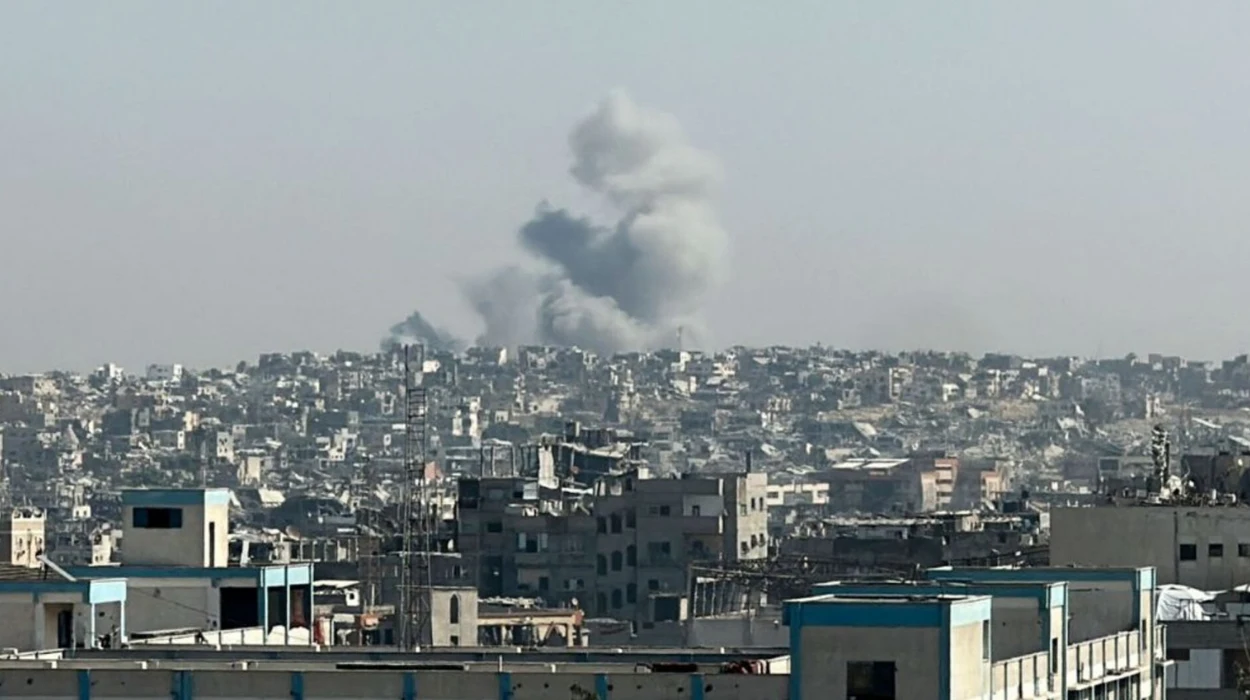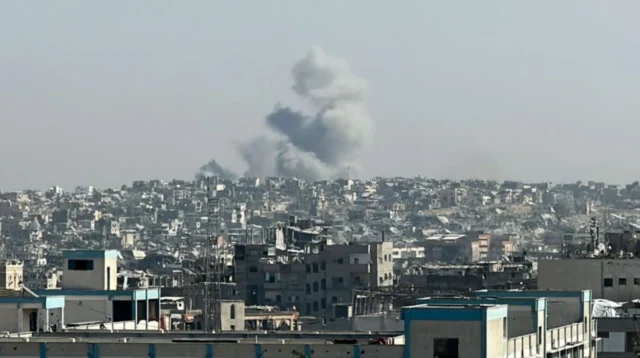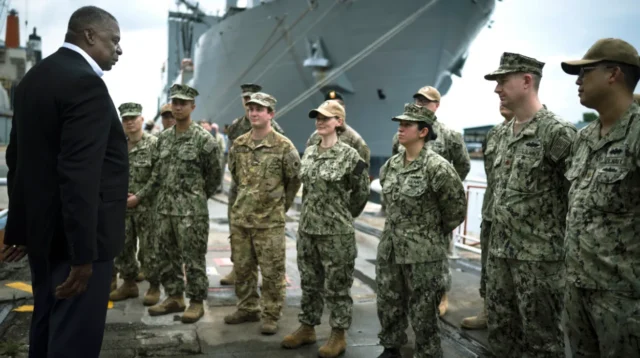The United States with President Donald Trump as its broker and great promoter of peace was able to strike a ceasefire agreement between Israel and Hamas, which came into effect on October 9, 2025, ending a disastrous two-year-long conflict that left tens of thousands of people dead. The deal was a vital but tentative step to one of the most complicated and protracted clashes in the Middle East.
The ceasefire was conceived as the first stage of an all-inclusive peace structure aimed at attaining long-term peace in Gaza by a staged disarmament of militant units, partial withdrawal of Israel and the introduction of a new system of governance under the watch of the international community.
But the truce was soon to be shaken at the very beginning of a few days during which it was signed. Isolated attacks and retaliatory airstrikes were reported to emphasize the overwhelming difficulties of imposing peace in the environment that was characterized by mistrust and fragmentation. The Israeli military accused Hamas militants of assaulting a patrol unit around Rafah and Palestinian authorities reported civilian casualties through Israeli air attacks which ensued. The leadership of Hamas, in its turn, accused Israel of breaking the truce by limiting humanitarian aid and not letting the hostages remain free on condition, which are the major clauses of the US-brokered pact.
President Trump minimized the misdemeanors saying it was natural friction in the initial implementation. However, a more profound structural problem cited by Vice President JD Vance was the fracturing of Hamas itself. According to intelligence tests, there are as many as 40 semi-autonomous Hamas cells that act unilaterally making it difficult to command and control them, and putting the rest in compliance with truce agreements at risk. This lack of unity within the troupe can be taken as one of the biggest threats to the success of the truce since rogue groups can easily sabotage peace processes on a larger scale.
Diplomatic efforts and regional dynamics
Although the truce has seen the large-scale hostilities be reduced, the humanitarian condition in Gaza has been dire. Blockade, war and physical destruction of infrastructures have plunged over two million people living within its borders into reliance on international aid. In the conditions of the ceasefire, Israel and Egypt were to resume major border points, and people were to be provided with humanitarian assistance without any restrictions. However, by the end of 2025, aid agencies are saying that the amount of supplies reaching Gaza is significantly less than promised.
Rafah crossing, the major route of Gaza to Egypt is closed with intervals and under strict security measures. Humanitarian agencies, such as the International Committee of the Red Cross and Medecins Sans Frontieres, have even publicly warned that the existing curtailment of access might result in a second humanitarian crisis in spite of warfare not being taking place. One of the senior Hamas spokespersons referred to the aid situation as a drop in the ocean which demonstrates the frustration of many Gazans who believe that the truce has not added too much tangible value to their situation.
Israel continues to insist that there must be limits to stop violence in smuggling of weapons and to make sure that distribution of aid is in tandem with international supervisory mechanisms. The aid agencies however claim that the long inspection periods and random shutdowns delay much needed medicines and food. Such logistical and political obstacles bring out the main paradox of the Gaza truce peace on paper that does not lead to any significant change to civilians.
Hostage recovery and prisoner exchanges
Amongst the highly debatable aspects of the truce, there is the issue of prisoner exchanges and the release of the remains of hostages. One of the significant violations of the agreement, which has been publicly accused by Israel of Hamas, is the withholding of at least 15 bodies of Israeli soldiers by Hamas. Hamas officials argue that continued security blockades hinder their efforts to retrieve them, affirming that they will not let up on their duties as long as circumstances permit.
The hostage situation is more politically significant. It creates pressure in Israel and erodes the faith people have on the peace process. On the same note, Hamas experiences internal opposition with certain groups holding that they should not give in on the prisoners because this will weaken their revolutionary legitimacy. Unless this sensitive matter is advanced, the truce may lose the support both politically and by the people on both sides.
Security dynamics and ceasefire enforcement
The deployment of security on the border of Gaza especially on the border of the yellow line demarcation area is a longstanding hotspot. The ceasefire accord provided that the Israeli forces would pull out of specific areas of cities, but they would still have air surveillance and the ability to retaliate. There have been however, fresh clashes along this border resulting in civilian deaths, destruction of property and renewed demands by the international peacekeepers.
Each side blames the other as sabotaging the truce. Israel Gilad and Hamas accuse each other of planting explosives and firing mortars in buffer zones, and Israel accuses Hamas of snipers and drones frequently crossing agreed limits of withdrawal. Civilians trying to come back to their homes in the severely damaged regions are in the middle of these conflicting charges highlighting the practical challenges of imposing peace in highly populated war zones.
According to American and UN observers posted in Rafah, violations are intermittent but escalating particularly following the increase in humanitarian frustrations. The International Crisis Group analysts caution that unless there is a mechanism that is credible to enforce and punish the violators, the ceasefire would degenerate into a pattern of managed instability, where frequent instabilities are normalised in the name of peace.
Navigating the uncertain road ahead
With the year 2025 approaching its end, the U.S.-mediated Gaza truce is more of a diplomatic achievement and an experiment on a fine scale of conflict control. The fact it has been effective in preventing massive violence at least in the short-term cannot be used to mask the structural issues which lie deep-rooted in Hamas disjointed leadership, hardline security stand taken by Israel and the desperate humanitarian reality of Gaza.
The scholars believe that the true peace will be based on the establishment of political faith and financial prospect, rather than the act of weapon silence. In the absence of any tangible positive changes in day-to-day life, Gazans will not consider the truce to be a legitimate and sustainable one. Equally, the politics of Israel is constrained by domestic politics that reflect the security anxieties and the coalition factors, which restrict its readiness to make courageous concessions.
The next few months will determine whether the truce will develop into a lasting system of living together or whether it will break down because of the unresolved suspicion. A lot is in the success of the U.S and its allies to achieve a balance between diplomacy, aid and enforcement in one of the most intractable conflicts in the world.
The Gaza truce raises an additional question about international diplomacy in 2025 beyond simply stability in the short term: can the externally mediated peace be sustained where internal realities are still as fractured and suspicions run high? The resolution could not only define the future of Gaza but also the effectiveness of international mediation in the conflict in which the border between peace and war is still very thin.






